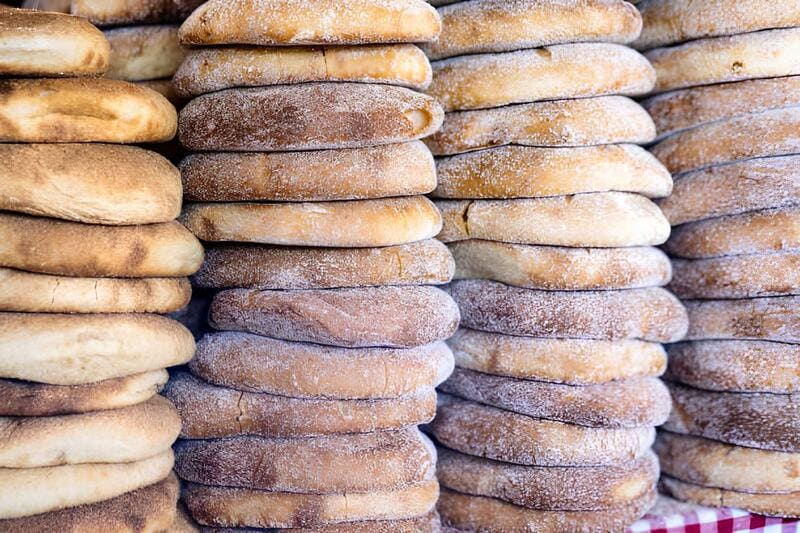
Batbout, also known as Moroccan Pita Bread, is a multidimensional delight. Its origins trace back to the heart of North African cuisine, notably Morocco. Recognized for its versatile use, this bread is a staple in many households and is celebrated for its quick preparation and versatility.
The bread’s flavor is mild yet slightly nutty, thanks to the combination of durum and white flours. When cooked, batbout puffs up beautifully, leaving a pocket that’s perfect for stuffed delicacies. This pocket can be filled with savory or sweet ingredients, making it a favorite across generations.
Ingredients
- 500g white flour
- 250g durum flour (Fino flour)
- 1.5 tablespoons granulated sugar
- 1.5 tablespoons yeast (1 tablespoon if hot weather)
- 1/2 teaspoon salt
- Water (approximately 250-300ml)
Preparation
- Mix the white and durum flours together in a large bowl.
- Add granulated sugar and yeast to the flour mixture and blend well.
- Slowly add water while mixing until a dough forms. The dough should be slightly sticky.
- Knead the dough until it is smooth and elastic (around 10 minutes by hand or 5 minutes in a kneading machine).
- Add salt and continue to knead for an additional 5 minutes.
- Divide the dough into small, evenly sized balls based on the desired size of your bread.
- Roll each ball lightly in a bit of flour and flatten them slightly.
- Place on a floured surface, cover with a cloth, and let them rest for 15-20 minutes to ferment.
- Heat a non-stick frying pan or a griddle over medium heat.
- Cook each piece of dough on the pan, flipping continuously to ensure even cooking and puffing, until both sides are golden brown and puffed up.
- Remove from heat and let cool slightly before serving.
Did you know?
Batbout, or Matlou in Tunisia, is quite similar to Egyptian “Baladi” bread in its preparation and uses. This bread is a true Mediterranean staple that showcases the ingenuity of regional cuisines by minimizing food wastage through its fermentation process. Historically, the wide availability of both durum and white flour has made batbout a household essential.
Batbout is often made in mini versions, making them perfect for individual servings or as bread for stuffed appetizers. A popular way to serve mini batbouts is by filling them with savory mixtures like spiced ground meat, olives, and roasted vegetables, or even sweet combinations like honey and nuts. The bread’s ability to maintain its softness for hours makes it an ideal choice for picnics or as a part of a mezze platter.
Learning how to make batbout is an excellent entry point for those interested in Moroccan or Tunisian cuisine. Its simple ingredient list and straightforward preparation mean that you get to enjoy the deep culinary traditions of North Africa right at home. Whether paired with stews, used for sandwiches, or enjoyed plain, batbout remains a versatile and beloved part of the Mediterranean culinary landscape.
